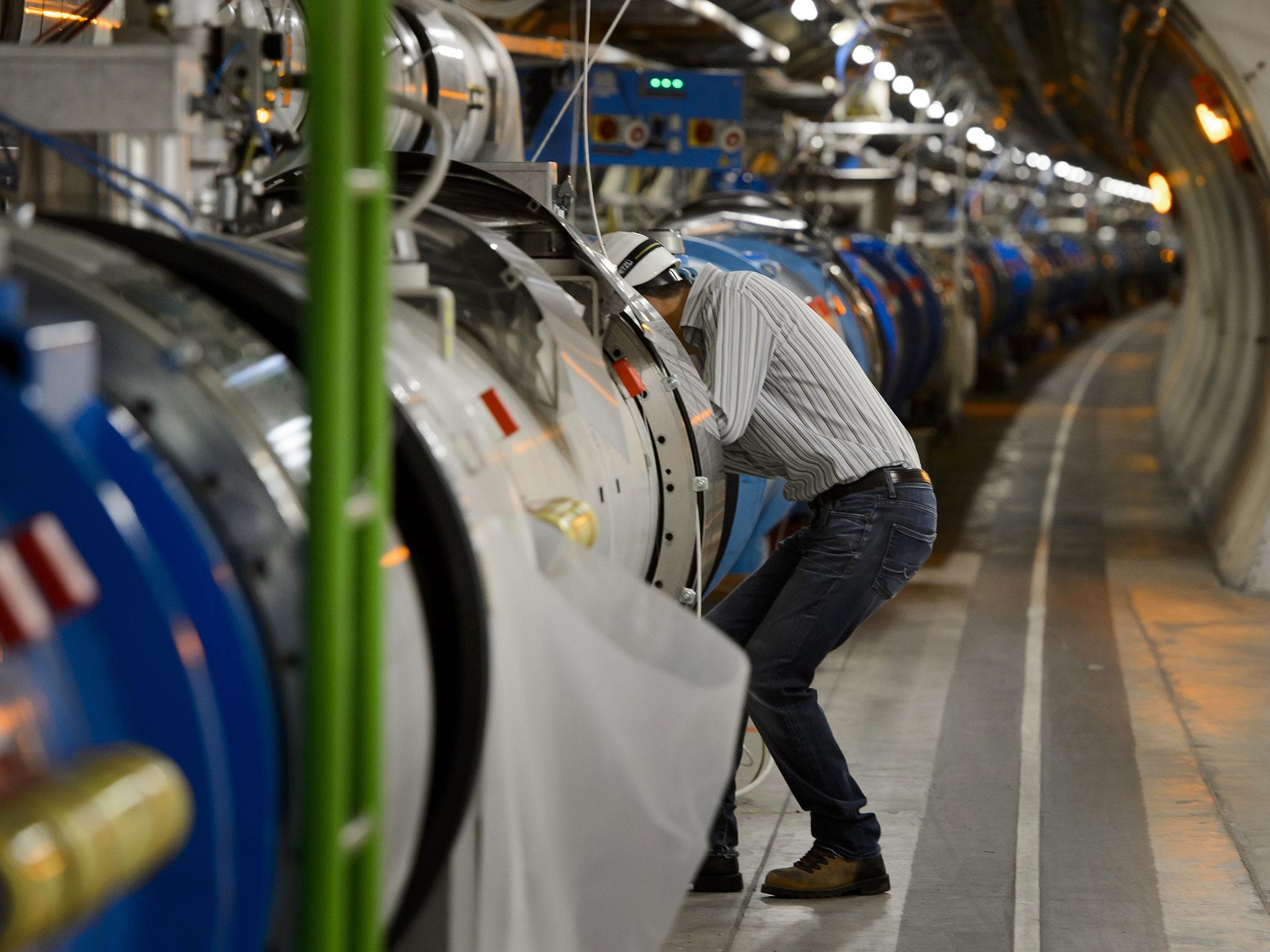Scientists plan to build huge hadron collider to try and look even deeper into the universe
'Future Circular Collider' is much bigger than the already very big Large Hadron Collider

It might be called the Large Hadron Collider. But, according to scientists who want to build a huge new one, it isn't quite large enough.
Engineers have proposed building a successor to the famous atom smasher that will dwarf the existing one and hope to shed even more light on the darkest mysteries of the universe.
Officials at CERN, the European Organization for Nuclear Research, presented Tuesday their study for a "Future Circular Collider" inside a 100-kilometer (62-mile) circumference tunnel that could start operating in 2040.
It would sit next to the current 27-kilometer (17-mile) circumference Large Hadron Collider near Geneva, which is perhaps best known for helping confirm the subatomic Higgs boson in 2012.
Officials hope for a decision by CERN's 22 member states within the next few years about the project that would debut with an electron-positron collider at an estimated cost of 9 billion euros ($10.25 billion).
A second phase would involve a superconducting proton machine in the same tunnel, at a cost of about 15 billion euros more. That machine could start operation in the late 2050s.
The concept paper, five years in the making, aimed to explore prospects of "tantalizingly more powerful particle colliders that can inaugurate the post-LHC era in high-energy physics," CERN said on its website.
Ultimately, the FCC would include a superconducting proton accelerator ring with energy of up to 100 tera electron volts, compared with a maximum 17 TeV in the current collider.
CERN Director-General Fabiola Gianotti called the report "a remarkable achievement" that could help boost understanding of fundamental physics and advance technologies.
CERN said it was not possible to say exactly what benefits the new collider would bring to the world, but pointed out that the discovery of the electron in 1897 led to the electronics industry that now contributes $3 trillion annually to the world economy.
The proposal came out of the European strategy for particle physics, which recommended that design and feasibility studies be conducted in order for Europe "to be in a position to propose an ambitious post-LHC accelerator project at CERN by the time of the next strategy update".
But the decision on whether to go ahead with the FCC - incurring an initial 9 billion euro ($10.25 billion) bill for participating governments plus a later 15 billion euro upgrade - is effectively part of an international race to host the LHC's successor, with China, Japan, the United States and Europe all interested.
"Any big machine for the future will be a global machine," said Arnaud Marsollier, head of media relations at CERN.
"No one expects to have two 100-km colliders built in the next 20 years, so if one is built in China, maybe Europe will do something else."
The LHC is expected to keep running until around 2036-2040, by which time it will have done its job collecting data, but it might also be possible to upgrade it by increasing the energy of collisions, which would require major investment.
China has floated plans for its own 100-km collider, but has not yet confirmed it will go ahead.
Japan is expected to take a decision on a linear collider in March, which could play into a potential choice by European countries in 2020 about whether to back the FCC or another proposal for CERN, the Compact Linear Collider.
For physicists, the location may be less important than the science opportunities on offered by a new collider, allowing them to peer into the debris left when subatomic particles smash together and shatter into even smaller pieces, some of which may answer fundamental questions about the universe.
But science mega-projects attract talent and can generate unforeseen spin-offs - including the invention of the World Wide Web at CERN, which has become a global centre for physicists, despite the high cost of living around Geneva.
The discovery of the Higgs boson in 2012 earned Peter Higgs and Francois Englert the 2013 Nobel prize. They had predicted half a century earlier that it would one day be discovered.
Additional reporting by agencies
Join our commenting forum
Join thought-provoking conversations, follow other Independent readers and see their replies
Comments
Bookmark popover
Removed from bookmarks